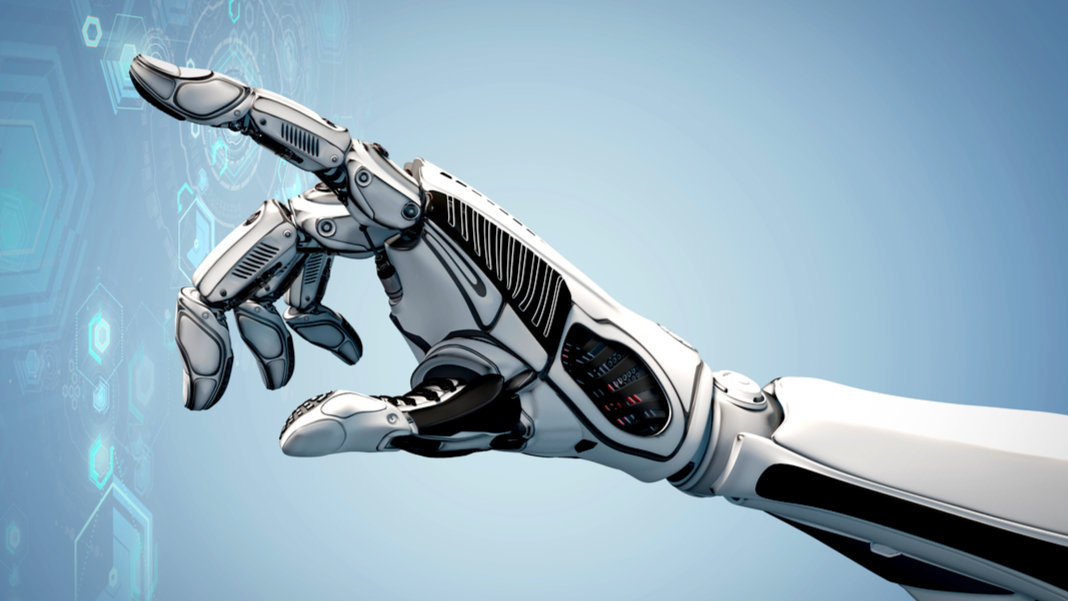
The robots are coming! For years, Hollywood has warned us about the rise of robots, especially those of the stone-cold killer variety.
However, the reality is far more exciting and humanizing—robots are rapidly becoming our friends, colleagues, employees, and the basis of our workforce.
Robotics venture investment grew 50% over the course of 2020, with no signs of stopping in 2021. Investments have now grown five-fold in 5 years, soaring to $5 billion in 2020 from $1 billion in 2015.
With so much investment, the time is ripe for ambitious entrepreneurs to take advantage of this generational opportunity.
In this blog, I’m going to discuss some of the fundamentals laws of robotics: where the robotics technology is today, where it will be in a few years, and where the hidden opportunities are.
Let’s dive in.
ROBOTS: OUR FRIENDS & EMPLOYEES
Camel racing is a centuries-old tradition in the Middle East—think the Kentucky Derby for sheikhs—and it’s one of the richest sports on Earth. However, it’s the jockeys who have changed the most.
Twenty years ago, camels were ridden by children—the lightest possible riders—but general principle, injury, and death led to a humanitarian outcry. So, both the UAE and Qatar banned the practice, replacing children with an even lighter saddle occupant: the robot jockey.
Today, in camel racing, robot jockeys are the norm. Exactly like traditional jockeys, these robo-replacements sit on a saddle, steer with the reins, and prod with a whip.
The latest robot jockeys are small, about a foot high, and light, weighing between five and eight pounds, with skinny hinged arms that control the reins and whip.
Of course, my point isn’t that there’s a bevy of entrepreneurial possibility in camel racing. It’s that robotics, another exponential technology long mired in deception, is now heading for disruption.
According to a report by the Littler Workplace Policy Institute: “Robotics is the fastest growing industry in the world, poised to become the largest in the next decade.” Which is to say, robot jockeys are just the beginning.
Consider Moxie, the brainchild of NASA roboticist Paolo Pirjanian, Co-founder of Embodied, Inc. (creator of Moxie). Moxie is a small, Pixar-like robot with large-eyes on a cute and dynamic virtual face and converses with children in a natural, lifelike manner, becoming a personalized companion to them.
You can continuously talk to it (as opposed to simply saying “Hi, Alexa”), and the Artificial Intelligence knows to take turns when conversing, allowing for fluid conversation and storytelling.
Importantly, Moxie doesn’t try to be too human or perfect—in fact, that’s where many other robotics companies have failed. Instead, Moxie has a key human-like element: it makes mistakes and learns.
Rather than a full prebuilt chatbot, Moxie has an actual personality and will learn over the course of an interaction. New interactions “unlock” new content and behaviors, further engaging the child in a goal-oriented manner. (If you have young kids, or kids with learning disabilities, please check out Moxie here.)
Besides human-like, user-friendly robots (a.k.a humanoid robots), we’re also seeing exponential progress in robotic agility, mobility, and diversity.
Enabled by a new generation of sensors and actuators, and driven by near-unlimited computing and artificial intelligence, there’s a Cambrian explosion in robotics, with species of all sizes, shapes, and modes of mobility crawling out of the muck of the lab and onto the terra firma of the marketplace.
Of course, what is driving the current robotics revolution is the convergence of exponentials. First and foremost is computation and machine learning/neuralnets. A lot of what today’s amazing walking, flying, dancing and talking robots can do is a simply result of cheaper, faster and more ubiquitous computation driving artificial intelligence. The second exponential is 3D printing, which is allowing researchers and tinkerers to design, build and test robotic parts faster and faster, i.e., faster manufacturing in robotics. Finally, it’s all about the networks and sensors that collect and feed data into the robot’s algorithms.
Festo, for one example, has built a robot that flies like a bird. Boston Dynamics, for another, now makes robots that can climb, crawl, jump, and hop, and all while carrying heavy loads (some bots can manage over a hundred kilograms of weight). Their robots can even dance to music or unpack boxes out of the back of an 18-wheeler.
Incredible companies like Chef Robotics are putting robots to work in the food industry. The National Restaurant Association reported that in 2017, 37% of its members listed labor recruitment as their top challenge, up from 15% in 2015. This means long lines for you, food deserts with little fresh food, and inconsistent orders (aka not enough guacamole). Chef Robotics believes robots are the best solution to this problem.
What’s the benefits of robots? Robots don’t unionize, don’t show up late, and don’t take lunch, and they can work on an assembly line for just a few dollars an hour. And as the minimum wage continues to increase now $14 per hour in California as of January 1, 2021 (for employers with 26 or more employees), there is a cross-over point coming where robots are just cheaper and better for certain roles.
THE GROWING INDUSTRIAL ROBOTICS MARKET
Indeed, the market for industrial robots has been experiencing double-digit growth annually since 2013, and is expected to continue at a CAGR of 12.3% through 2026.
A 2017 report by the McKinsey Global Institute concludes that almost 50 percent of tasks done by employees at work are at high risk of being taken by computers (robotics and artificial intelligence). Among these are data collection and processing, which represent 51% of the activity in the US economy.
In China, Foxconn, the Chinese electronics manufacturer that builds Apple’s iPhone, made news back in 2013 when the skyrocketing demand for cell phones led to labor disputes, reports of harsh working conditions, even riots and suicides.
In the aftermath of these reports, Foxconn has been moving to automate 30% of its workforce by cutting 60,000 jobs in 2016 and replacing them with robots, a trend accelerated by the coronavirus pandemic.
Besides replacing our blue-collar workforce, robots will and have been invading a much wider assortment of fields. Just consider the effect autonomous driving will have on truck drivers, or surgery robots on healthcare, or companion robots for therapy and eldercare.
“If I were an exponential entrepreneur looking to create tremendous value”, says robotics expert Dan Barry, “I’d look for those jobs that are least enjoyable for humans to do … Given that the global market for unskilled labor is worth many trillions of dollars, I would say this is a huge opportunity.”
FINAL THOUGHTS
Startup infrastructure dedicated specifically to robotics continues to grow—the recent announcement of the Founder Institute partnering with the NASA Ames Research Center and MassRobotics to launch an AI- and Robotics-focused accelerator is just one example.
At the same time, the continued exponential growth of AI, robotics, and other technologies, along with our improving understanding of human nature, are moving us to a world of true robotic colleagues and friends.
If you’re an ambitious entrepreneur interested in this field and excited by the progress we’ve made so far, there’s no better time than the present to get involved.
JOIN MY ABUNDANCE360 COMMUNITY
If you want my coaching as an exponential entrepreneur and to reinforce those mindsets that will inspire and guide you to create a hopeful, compelling and abundant future for yourself and humanity, then consider joining my year-round Abundance360 coaching program and come to our in-person A360 Summit February 2-4, 2022.
Every year, my team and I select a group of 360 entrepreneurs and CEOs to coach over the course of a year-long program. You can join at any time for a full year’s worth of personal coaching on Exponential Tech, Longevity, Moonshots, and Abundance thinking and a mix of in-person and virtual content.
My mission is to help A360 members obtain mastery in four specific mindsets: an Abundance Mindset; an Exponential Mindset; a Moonshot Mindset; and a Longevity Mindset. Together we will actively select and reinforce your preferred Mindsets.







